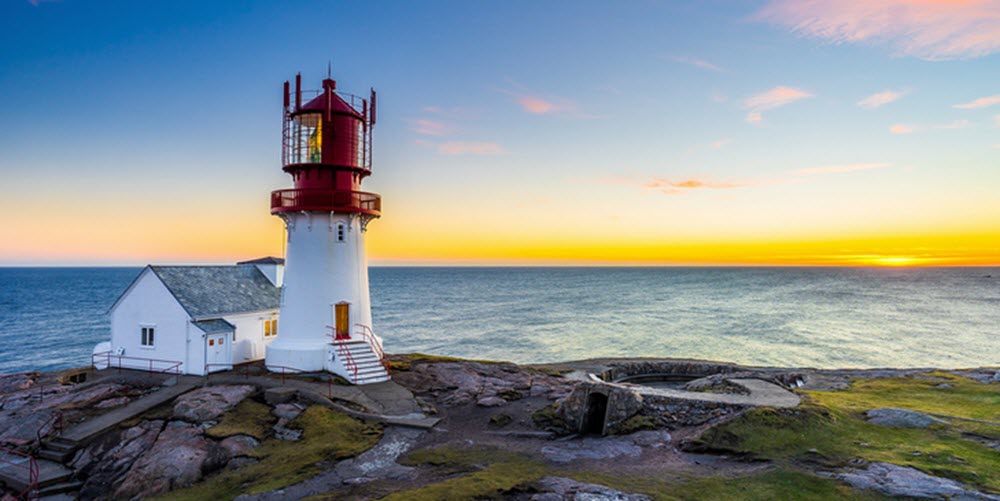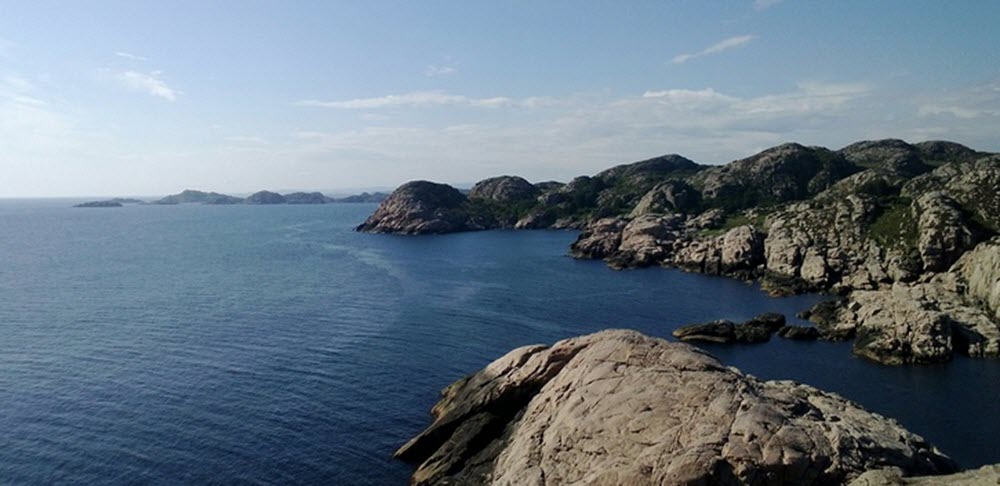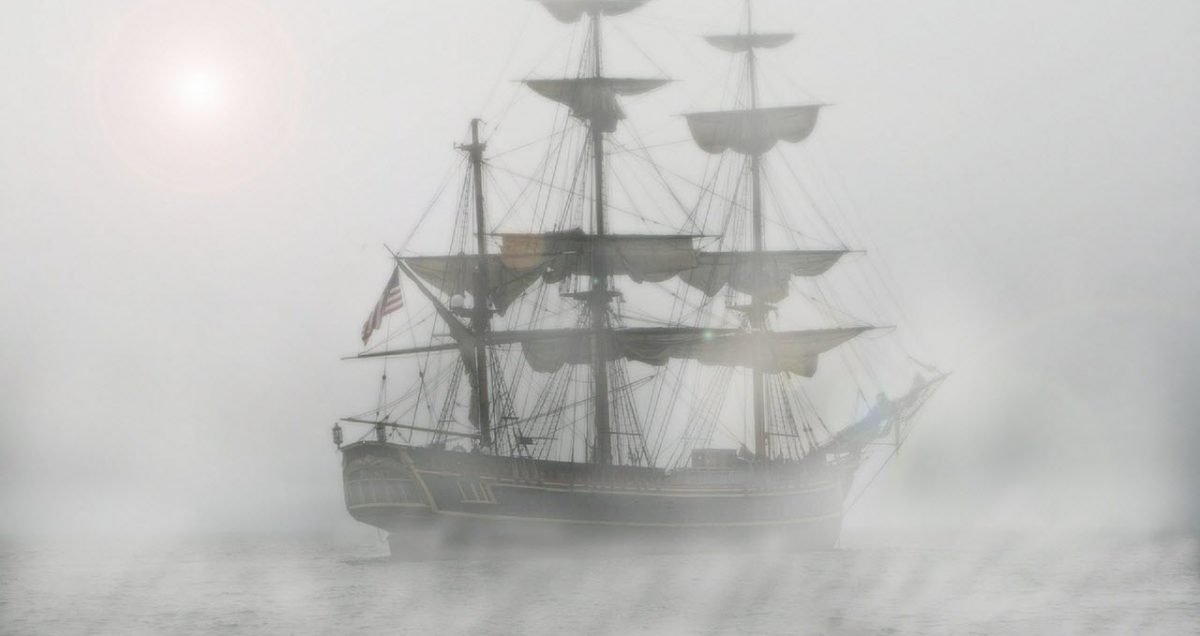Contents
Lindesnes Lighthouse is located at the southermost tip of Norway. It is still active and a part of the Norwegian Coastal Administration, but also a popular tourist destination. Fog Horn Day is celebrated here on the last Sunday of July each year.
Norway’s first lighthouse was erected here back in the 1600s, when the area was controlled by Denmark. The current lighthouse is from 1915, and it didn’t get a fog singal until 1920 – a siren. The fog siren and its machinery are located in a special building beside the lighthouse tower.

Where is it?
Lindesnes Ligthouse (Norwegian: Lindesnes fyr) is located roughly 10 km south-west of the village Høllen in southern Norway, within the Lindesnes municipality and Vest-Agder county.
Coordinates: 57°58′59″N 7°2′53″E
The lighthouse
The current lighthouse was built here in 1915. It is a sligthly more than 16 metres tall cylindrical cast iron structure with a granite foundation. It’s painted white with a red top, to be clearly visible from afar.
The light
The light of the lighthouse is placed at an altitude just a tad above 50 meters (above sea level). The light is on 24/7 and emits a fixed and flashing white light that rotates between low intensity and high intensity every 20 seconds (FFl W 20s).
The light, which depends on a first order Fresnel lens, is visible for up to 17.7 nautical miles. (This is equal to nearly 33 km.)
Automatation
This lighthouse has been automatic since 2003.
Identification
- Admiralty number: B3058.1
- NGA number: 1676
- ARHLHS number: NOR-028
- Norway number: 082200
The museum
The museum is run by the non-profit Lindesnes Lighthouse Museum Foundation.
In addition to the lighthouse itself, the tourist destination contains keeper’s cottages, boathouses and sheds. There is also a visitor centre inside the nearby mountain. The visitor centre is a place for learning, and it contains both exhibition hall and cinema hall. There is also a cafeteria and museum shop here.

History
- The Danish king tried to establish a guiding light here in the 1650s, but the project ran into numerous problems and was discontinued fairly quickly.
- On February 1, 1725, a guiding coal fire was lit here, cared for by Jørgen Michelsen Bornholm. It worked in conjuction with another coal fire on Markøy to the west. Both were very simple constructions: an open container filled with coal placed directly on the cliff. (The fire on Markøy was estinguished in 1844, but the one at Lindesnes remained active.)
- In the year 1822, a protective construction was built for the coal container, to ensure smoother and more economical burning of the coal. The foundation of this construction has survived into our time.
- A first order lense was installed in 1854, and the coal fire was exchanged for a parafin and wicker combo.
- The cast iron tower was ready in 1915.
- A machinehouse and fog siren was added in 1920.
- During World War II, the lighthouse was occupied by the Germans, who established a small fortress here, with bunkers and rooms in the mountian below. The Germans wanted to control the lighthouses to ensure safe navigation for German vessels and mislead enemy vessels. Many of the rooms and tunnels created here by the Germans are now open to visitors, and some has been converted into exhibition halls.
- The lighthouse station was electrified in the 1950s. The old fog signal was replaced with a diaphone.
- The fog signal was closed as a navigational aid in 1988. Since then, it is only sounded during special occasions, e.g. to entertain visitors.
- The lighthouse was automated in 2003. Yet, there is still staff present at Lindesnes Lighthouse around the clock. It’s the only ligthhouse in Norway with 24/7 staff.
